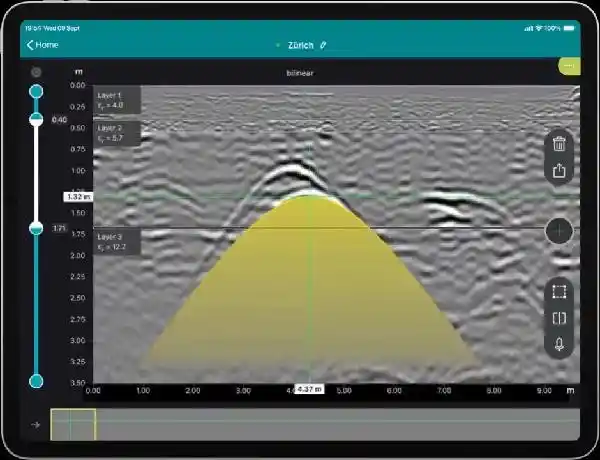The Future Perspective of Site Investigation: Innovations in GPR Techniques
With the rising need for effective site investigation techniques expands, Ground Penetrating Radar technology is emerging as a key solution in diverse industries. GPR surveys deliver critical insights into subsurface conditions, helping professionals locate and outline underground utilities, geological structures, and other concealed elements. This cutting-edge technology enhances project planning and execution, ultimately contributing to safer and more cost-effective construction and engineering practices.
In the dynamic landscape of infrastructure and environmental assessments, understanding the importance of GPR surveys is vital. These non-invasive surveys not only enhance the investigation process but also minimize risks associated with undiscovered subsurface conditions. By leveraging GPR technology, construction teams, environmental consultants, and archaeologists can discover key information, paving the way for informed decision-making and effective project outcomes. As we explore the future of GPR technology, it is crucial to investigate its applications, benefits, and the advancements that will influence its impact in site investigations moving forward.
Comprehending GPR Investigations along with The Significance
Ground Penetrating Radar (GPR) surveys have become a vital instrument in various industries, helping practitioners to map out underground elements while avoiding disruption. Through sending high-frequency signals into the ground, GPR can identify changes in material composition and locate objects below the surface. This non-invasive method offers substantial benefits for surveying underground utilities, geological formations, and even archaeological sites, establishing it as an essential instrument for civil engineers, historical researchers, and ecologists alike.
The significance of GPR assessments is critical, notably especially it comes to ensuring safety and cost efficiency in building initiatives. They allow for the identification of hazards such as buried infrastructure, voids, or structural anomalies prior to excavation. By gathering accurate information about the underground environment early in the planning stages, GPR assists reduce risks, lowers the risk for costly delays, and ultimately results in greater efficiency task execution.
Moreover, GPR investigations play a significant function in decision processes procedures across various industries. In visit this page , for instance, they aid inform site selection and development approaches by offering essential insights into subsurface conditions. In historically sensitive areas, GPR assists in protecting historical resources as it allow for necessary progress. As technology continues to evolve, the function of GPR assessments in these fields will expand, emphasizing their significance in modern investigations.
Applications and Benefits of GPR Technology
GPR (GPR) technology has a wide range of applications throughout different industries, making it an indispensable tool for locating subsurface structures and features. In civil engineering and engineering, GPR surveys play a key role in locating utilities, such as hydraulic, fuel, and electricity lines, which helps avert accidents and expensive repairs during excavation. Moreover, GPR is used to detect voids, internal anomalies, and other hidden concerns before construction commences, ensuring projects continue without issues and with safety.
In historic studies, GPR has transformed the way researchers uncover historical sites and artifacts without disturbing the ground. GPR Survey Droitwich Spa -destructive method allows archaeologists to map below-ground features and locate potential digging sites with exceptional accuracy. Similarly, in environmental investigations, GPR supports in detecting hazards and analyzing groundwater flow, aiding in the assessment and cleanup of tainted areas. The flexibility of GPR technology makes it a widely applicable tool across multiple fields.
The economic benefits of using GPR surveys are significant. By identifying potential issues beforehand, GPR helps reduce time and money on construction sites, minimizing delays and unforeseen costs. The accuracy of GPR technology lessens the risk of damaging existing utilities, thereby avoiding expensive repairs and service disruptions. As GPR technology continues to advance, its applications will expand, providing even greater efficiency and cost-effectiveness for projects in various sectors.

GPR Surveys: Cost, Precision, and Upcoming Trends
Pricing considerations for GPR surveys often depend on multiple factors such as the size of the project, geographical area, and the complexity of the survey required. Generally, GPR surveys can be more budget-friendly than traditional methods when considering the potential for preventing excavation, reducing project delays, and reducing costly mistakes during construction. It is imperative for clients to understand the extent of their project to receive accurate estimates and determine the return on investment that GPR surveys can provide.
Precision is one of the key features of GPR technology, offering substantial improvements over conventional surveying techniques in locating subsurface services and structural irregularities. GPR surveys can reach varying depths and provide high-resolution images, which can lead to more knowledgeable decision-making in construction and engineering projects. However, the precision of results can also depend on factors such as the composition of the soil, moisture content, and the presence of other underground structures. As the technology continues to progress, improved algorithms and enhanced signal processing techniques are expected to increase accuracy levels further.
Looking to the future, GPR surveys are poised to play a crucial role in advancing civil engineering and infrastructure inspection. As technology innovations unfold, including the integration of GPR with artificial intelligence and machine learning, we can expect improved interpretation of data and greater automation in surveys. This not only streamlines the process but also introduces new applications, potentially revolutionizing how we approach subsurface exploration. The ongoing progress in GPR technology signify a promising future, ensuring that it remains a crucial tool in the fields of infrastructure, historical study, and environmental studies.